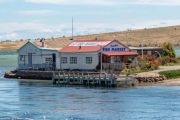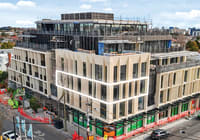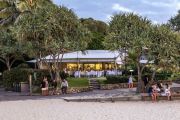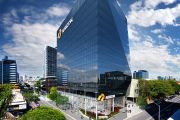
A retirement village inside a uni? This operator is planning one
Keyton, the $3.2 billion retirement village spun out of Lendlease, has set itself an ambitious target of operating 20,000 living units as it concentrates its expansion along the eastern seaboard.
With around 13,500 units in its portfolio, Keyton is one of the country’s largest retirement village operators, typically building another 200 to 300 new units each year, including one project planned at the University of Wollongong.

At that run rate, it would take at least 20 years to hit its growth target, on a conservative estimate.
But chief executive Nathan Cockerill is not planning to wait that long. Keyton has a pipeline of around 1100 units it can develop, but it can also expand more quickly through acquisition.
“We have a medium- to longer-term view that we want to get to 20,000 units across the portfolio. We see that as our optimal size, based on all of the modelling that we’ve done,” Cockerill told The Australian Financial Review.
“We’re working with our investors around what opportunities we see and their appetite on whether to put more capital into the business to help us grow. That’s the next evolution.”
Acquisitions have helped take the Keyton portfolio to its current size and there is plenty of opportunity to pick up small portfolios as private developers exit.

“A lot of developers develop out two or three retirement villages, [then] realise it’s quite challenging to manage them and then look to sell them,” Cockerill said. “That’s what we’ll look to do in the short to medium term. We’ve got to make sure that they’re the right size, they’re in the right locations, and their built form quality is what we expect as well.”
Such deals would need capital to be raised, but Keyton has big backers, with Aware Super controlling 49.9 per cent and the remainder divided between Dutch pension giant APG and Lendlease.
Having sold down the majority of its stake already, Lendlease is looking to exit its final 25 per cent. Gresham is managing that process.
Meanwhile, Keyton is exiting its 10-asset West Australian portfolio to focus on growth in the east. That divestment will reduce its portfolio by around 1600 units. It is in talks with a buyer, expected to go into exclusive due diligence shortly.
The WA sale, Keyton’s own expansion ambitions, and the interest being drummed up for the Lendlease stake are all indicative of how much corporate activity there is in the sector.

Elsewhere, Scape is in talks to take over Brookfield’s 10,000-unit Aveo retirement living business for more than $3 billion, while next month housing provider GemLife will debut on the ASX with a market capitalisation of around $1.5 billion. GemLife is a land lease operator, providing greenfield plots for rent in a housing estate, typically taken up by budget retirees.
The Keyton operation generates a cash yield of 3 per cent to 3.5 per cent. Return on equity is around 8 per cent to 10 per cent, boosted by the capital growth in its portfolio.
“There’s a lot of activity going on across the sector, around various forms of capital, looking at this sector as an alternative class of assets,” Cockerill said.
“The cash yield may be lower than what [investors] usually get from commercial real estate. But ultimately, the long-term growth opportunities in this sector are there.
“It’s one of those sectors where there’s an ageing demographic and there’s huge opportunity in the long run around this portfolio. We see more capital looking at this and trying to get an understanding of the business model.”

Underlying that confidence are some big demographic and economic drivers. Vacancy is at 4 per cent in the sector and average cost of a unit is 59 per cent of the median house price, according to a Property Council/PwC survey released week.
By 2040, the over-75 population is expected increase from around 2 million to 3.7 million – an 85 per cent increase. But over the next five years, just over 12,000 new units are expected to be built.
Another shift is apparent also, as more than half the new facilities will be apartment-style buildings or at least multi-level, according to the survey. Increasingly, operators such as Keyton include home care services either directly or through a third-party provider.
At Keyton, the offer is diversifying as well. With the average price of a unit at around $650,000, its 17,000 residents buy in through various arrangements including a deferred management fee that is paid on exit, or a bond paid upfront.
Among its latest projects, Keyton plans a 200-unit retirement village at the University of Wollongong as part of a health precinct. An aged care facility will be adjacent, and research collaboration with the university is planned.
Relatively new, the luxury retirement segment accommodation is also expanding. Under its Ardency brand, Keyton is building into that segment. On the north side of Sydney Harbour, at Keyton’s Greenwich units are selling for between $2 and $6 million.
In Melbourne, in inner-city Richmond at the former GTV9 site, the Kennedy Place facility is 90 per cent sold out with units costing from $900,000 up to $2.7 million for the penthouse.











